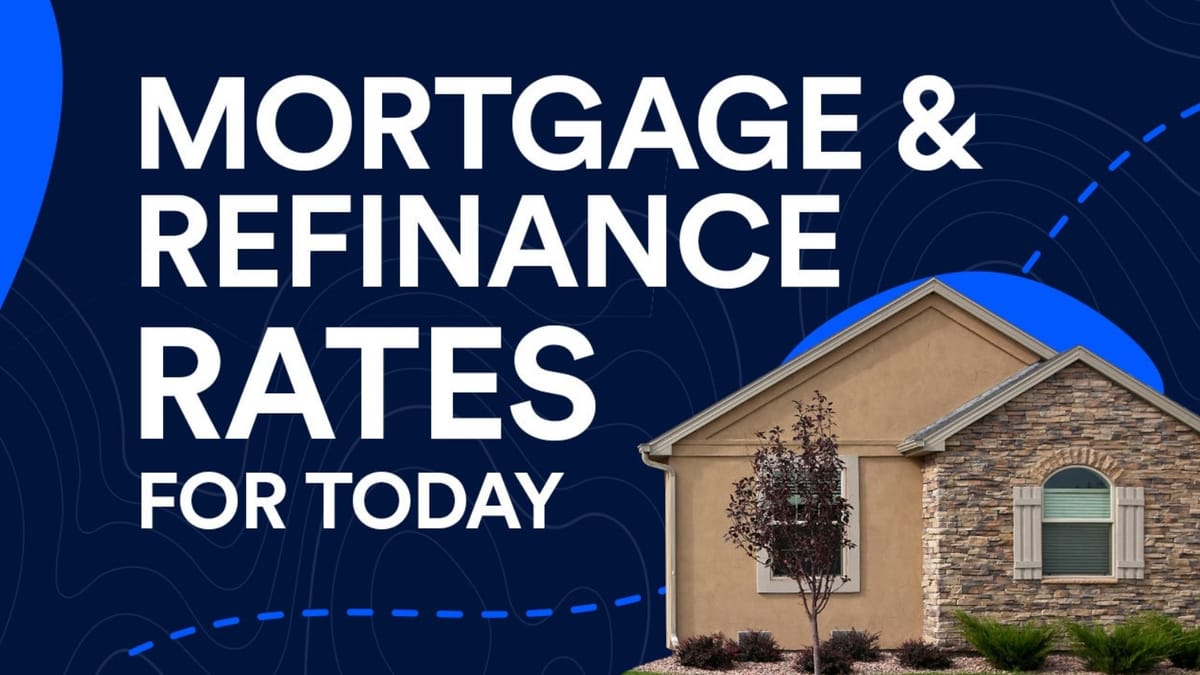How Does Mortgage Interest Work?

Understanding mortgage interest is crucial when buying a home. It's a key factor that affects your monthly payments and the total cost of your loan. Whether you're a first-time homebuyer or looking to refinance, grasping the intricacies of mortgage interest can help you make informed financial decisions. This comprehensive guide will delve into the workings of mortgage interest, different types of mortgage rates, and how to select the best option for your financial situation.
What is Mortgage Interest?

Mortgage interest is the cost of borrowing money to purchase a home. It's expressed as a percentage of the loan amount and is typically paid monthly along with the principal repayment. The interest compensates the lender for the risk of lending you money and for the opportunity cost of not investing that money elsewhere.
How Mortgage Interest Rates are Determined
Several factors influence mortgage interest rates, including economic conditions, inflation, the Federal Reserve's policies, and the overall demand for mortgage loans. Lenders also consider individual borrower factors like credit score, loan-to-value ratio, and debt-to-income ratio when setting rates.
Economic Conditions
The health of the economy plays a significant role in determining mortgage interest rates. In a strong economy, rates tend to rise due to increased demand for credit. Conversely, in a weak economy, rates often fall to encourage borrowing and investment.
Inflation
Inflation reduces the purchasing power of money over time, prompting lenders to charge higher interest rates to compensate for the diminished value of future loan repayments.
Federal Reserve Policies
The Federal Reserve influences mortgage rates through its control of the federal funds rate, which is the interest rate at which banks lend to each other overnight. Changes in this rate can impact mortgage interest rates indirectly.
Borrower Factors
Your credit score, loan-to-value ratio, and debt-to-income ratio significantly affect the interest rate you qualify for. Higher credit scores and lower debt-to-income ratios generally result in lower interest rates.
Fixed-Rate Mortgages
Fixed-rate mortgages have an interest rate that remains constant for the life of the loan. This predictability makes it easier for borrowers to budget and plan for the future.
Benefits of Fixed-Rate Mortgages
- Stability: Your monthly payments remain the same, providing financial stability.
- Simplicity: Easier to understand and manage.
- Protection: Shields you from rising interest rates.
Drawbacks of Fixed-Rate Mortgages
- Higher Initial Rates: Fixed rates can be higher than initial adjustable rates.
- Less Flexibility: If rates drop, you won't benefit without refinancing.
Adjustable-Rate Mortgages (ARMs)
Adjustable-rate mortgages have interest rates that change periodically based on market conditions. They typically start with a lower rate than fixed-rate mortgages but can increase over time.
How ARMs Work
ARMs have an initial fixed-rate period, after which the rate adjusts periodically. The adjustment period can vary, commonly every year after the initial fixed period.
Benefits of ARMs
- Lower Initial Rates: Lower initial payments can be advantageous if you plan to sell or refinance before the rate adjusts.
- Potential Savings: You might benefit from lower rates if market rates decline.
Risks of ARMs
- Uncertainty: Future payments are unpredictable.
- Higher Payments: Payments can increase significantly over time.
Interest-Only Mortgages
Interest-only mortgages allow you to pay only the interest for a specified period, typically 5-10 years, after which you begin paying both principal and interest.
Benefits of Interest-Only Mortgages
- Lower Initial Payments: More affordable monthly payments during the interest-only period.
- Flexibility: Can be beneficial if you expect a significant increase in income.
Drawbacks of Interest-Only Mortgages
- No Equity Building: You don’t reduce your loan balance during the interest-only period.
- Higher Future Payments: Payments can rise sharply when the interest-only period ends.
How Mortgage Interest is Calculated
Mortgage interest is typically calculated using one of two methods: simple interest or compound interest. Most mortgages use simple interest, where interest is calculated on the principal balance.
Simple Interest
With simple interest, the interest amount is calculated based on the outstanding principal balance. For example, if you have a $200,000 loan at 4% interest, your annual interest would be $8,000.
Compound Interest
While not commonly used in mortgages, compound interest means interest is calculated on the principal plus any previously accrued interest.
Amortization and Mortgage Interest
Amortization refers to the process of paying off a loan through regular payments over time. Each payment includes both interest and principal repayment. In the early years, a larger portion of your payment goes towards interest. Over time, as the principal balance decreases, the interest portion of your payment declines, and more goes towards reducing the principal.
Amortization Schedule
An amortization schedule outlines each payment's breakdown into interest and principal, showing how the loan balance decreases over time. Understanding this schedule can help you see how your payments impact your loan balance and total interest paid.
Impact of Mortgage Interest on Monthly Payments
The interest rate directly affects your monthly mortgage payment. Higher interest rates increase your monthly payment, while lower rates decrease it. Using a mortgage calculator can help you estimate your monthly payments based on different interest rates and loan terms.
Example Calculation
Consider a $300,000 mortgage with a 30-year term:
- At a 3% interest rate, the monthly payment would be approximately $1,265.
- At a 4% interest rate, the monthly payment would be approximately $1,432.
Mortgage Points and Interest Rates
Mortgage points, or discount points, are fees paid upfront to reduce your mortgage interest rate. Each point typically costs 1% of the loan amount and can lower the interest rate by about 0.25%.
When to Buy Points
Buying points can be beneficial if you plan to stay in your home for a long time. The upfront cost is offset by lower monthly payments over the life of the loan.
Break-Even Point
The break-even point is when the savings from a lower interest rate equal the cost of the points. Calculating this can help determine if buying points is worthwhile.
Refinancing and Mortgage Interest
Refinancing involves replacing your existing mortgage with a new one, usually to secure a lower interest rate, reduce monthly payments, or change loan terms.
Benefits of Refinancing
- Lower Interest Rates: This can significantly reduce monthly payments and total interest paid.
- Change Loan Terms: Switch from an adjustable-rate to a fixed-rate mortgage or vice versa.
- Access Home Equity: Cash-out refinancing allows you to access your home’s equity for other expenses.
Costs of Refinancing
- Closing Costs: Refinancing involves fees similar to those in the original mortgage.
- Break-Even Point: Consider how long it will take to recoup these costs through lower payments.
Prepayment and Mortgage Interest
Prepaying your mortgage means making extra payments towards the principal balance. This can reduce the total interest paid and shorten the loan term.
Benefits of Prepayment
- Interest Savings: Reducing the principal balance decreases the interest charged.
- Early Loan Payoff: Paying off your mortgage faster frees up funds for other investments.
Considerations
- Prepayment Penalties: Some mortgages charge a fee for early repayment.
- Opportunity Cost: Ensure prepaying the mortgage is the best use of your funds compared to other investment opportunities.
Choosing the Right Mortgage for You
Selecting the right mortgage involves considering your financial situation, future plans, and risk tolerance.
Assessing Your Financial Situation
Evaluate your income, savings, and credit score. This helps determine the loan amount you can afford and the interest rate you qualify for.
Future Plans
Consider how long you plan to stay in the home. A fixed-rate mortgage might be better for long-term stability, while an ARM could save money if you plan to move or refinance soon.
Risk Tolerance
Determine your comfort level with potential payment increases. Fixed-rate mortgages offer stability, while ARMs involve more risk but potential savings.
Frequently Asked Questions
What is a mortgage interest rate?
A mortgage interest rate is the percentage of the loan amount charged by the lender for borrowing money to buy a home.
How does mortgage interest affect my monthly payment?
Mortgage interest is part of your monthly mortgage payment. Higher interest rates increase your monthly payment, while lower rates decrease it.
What are the main types of mortgage interest rates?
The main types are fixed-rate and adjustable-rate mortgages. Fixed-rate mortgages have a constant rate, while adjustable-rate mortgages have rates that change periodically.
Can I lower my mortgage interest rate?
You can lower your rate by improving your credit score, buying mortgage points, or refinancing your loan when rates drop.
What is an amortization schedule?
An amortization schedule is a table detailing each loan payment's allocation between principal and interest over the loan's term.
Should I pay off my mortgage early?
Paying off your mortgage early can save on interest, but consider any prepayment penalties and whether the funds could be better invested elsewhere.
Conclusion
Understanding how mortgage interest works is essential for managing your home loan effectively. By knowing the factors that influence interest rates, the differences between fixed and adjustable rates, and the impact of interest on your monthly payments, you can make informed decisions that align with your financial goals. Whether you're buying your first home, refinancing, or exploring different mortgage options, a clear grasp of mortgage interest will help you navigate the process with confidence and make the best choices for your future.




